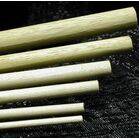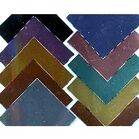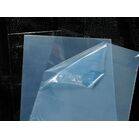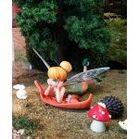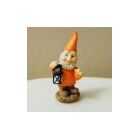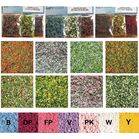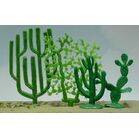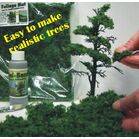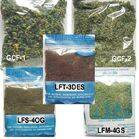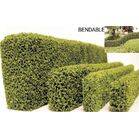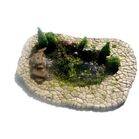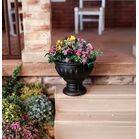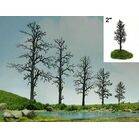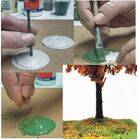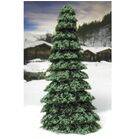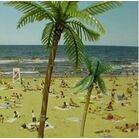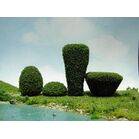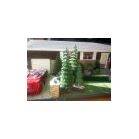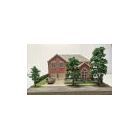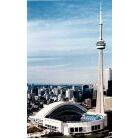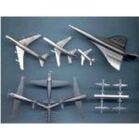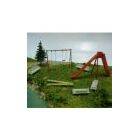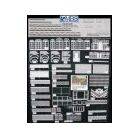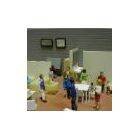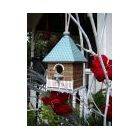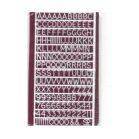TREES ARE BIG!!![]()
The Importance of Using the Right Size Tree in Scale Models
When it comes to building scale models, attention to detail is everything. From the precision of the tiniest parts to the accuracy of the overall scene, every element plays a crucial role in achieving realism. One often-overlooked aspect of scale modeling is the size of the trees used in your dioramas or layouts. Though they may seem like a minor detail, selecting the right size tree can make or break the authenticity of your model. Here’s why getting the tree size right is so important and how it can elevate your scale model to the next level.
1. Achieving Realism
One of the primary goals in scale modeling is to create a scene that looks believable and realistic. Trees are a dominant feature in many environments, whether you’re modeling a bustling city park, a tranquil countryside, or a dense forest. Using trees that are correctly scaled ensures that they fit naturally into the overall landscape. Oversized trees can dominate a scene, while undersized trees might make it look barren or unconvincing. By choosing the right size, you maintain the balance and proportionality of your model, which is crucial for achieving that “wow” factor.
2. Enhancing Depth and Perspective
Properly sized trees contribute significantly to the depth and perspective of your model. In real life, trees vary in height and density depending on their species and location. By matching the scale of the trees with the rest of your model, you help to create a sense of depth and dimensionality. This helps viewers understand the scale of your model better and adds a layer of realism to the scene. For example, a row of accurately scaled trees can create a believable sense of distance, making a small area feel larger and more expansive.
3. Complementing Other Scaled Elements
In scale modeling, every element needs to harmonize with the others to create a cohesive scene. Trees are no exception. If your model features vehicles, buildings, or figures, their sizes should be proportionate to the trees. A well-sized tree complements the surrounding elements, ensuring that everything fits together seamlessly. This attention to detail helps avoid visual discrepancies and maintains the overall harmony of the model.
4. Improving Visual Balance
Trees often serve as focal points or background elements in a model scene. Their size affects the visual balance of the entire layout. For instance, a large, imposing tree can draw attention away from smaller, equally important details if not scaled correctly. Conversely, small trees may be overshadowed in a larger setting. By carefully selecting the right size, you achieve a balanced composition that allows all elements of your model to shine without overwhelming or diminishing each other.
5. Reflecting Accurate Scale
Different types of trees vary greatly in size, even within the same species. Accurate scaling requires considering the average height and spread of the tree types you are modeling. Whether you’re creating a historical diorama or a fantasy landscape, using trees that reflect the correct scale helps in maintaining historical or contextual accuracy. This is particularly important for models depicting real-world settings or events where accurate representation adds value and credibility.
6. Boosting Viewer Engagement
Models that feature correctly sized trees tend to capture viewers’ attention more effectively. When your model looks realistic and thoughtfully constructed, it invites closer inspection and admiration. Viewers appreciate the effort put into achieving authenticity, and well-sized trees are a key part of that effort. Engaging viewers with a believable and immersive scene enhances their overall experience and can lead to greater appreciation for your work.
**Tips for Selecting the Right Size Trees**
- **Measure and Calculate**: Use reference materials or real-life measurements to determine the appropriate tree height for your scale. For example, if you’re working in 1:48 scale, a tree that is 20 feet tall in reality would be approximately 5 inches in your model.
- **Compare with Other Elements**: Place trees next to other scaled elements like figures or vehicles to ensure they are proportionate.
- **Use Quality Models**: Invest in high-quality tree models or materials that offer a range of sizes and realistic details.
In summary, the right size tree is a small but vital detail in scale modeling. It enhances realism, improves depth and perspective, complements other scaled elements, and maintains visual balance. By paying attention to this detail, you can significantly elevate the quality and impact of your scale model. So, the next time you’re adding trees to your diorama or layout, remember that size matters—and it’s a key ingredient in creating a model that truly impresses.
Use this handy chart to help you choose the right size tree! 



